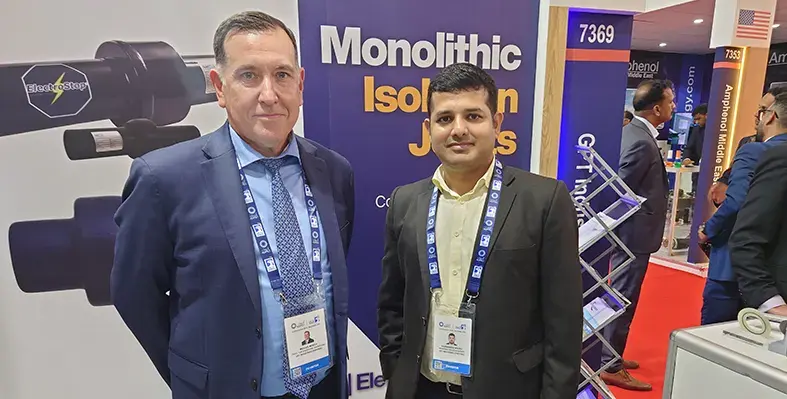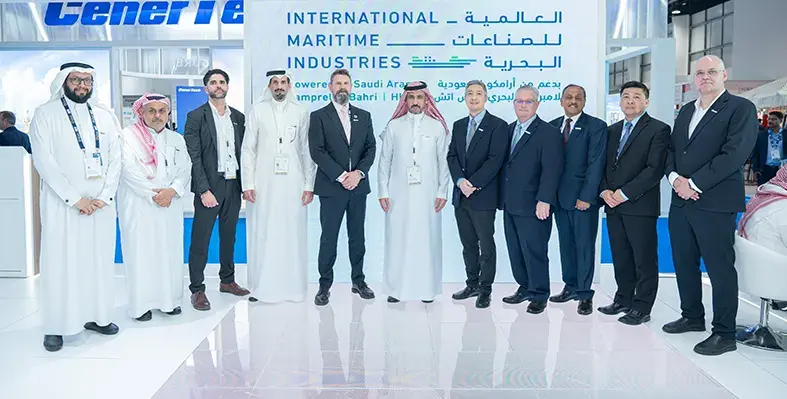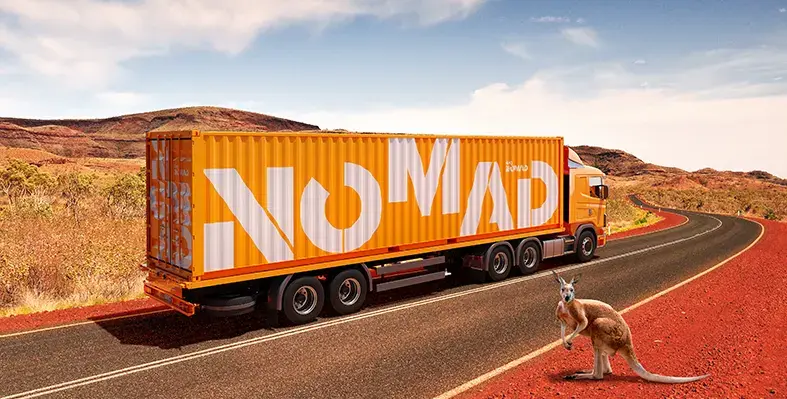
Michael Monica, director global sales, marketing and customer care, GPT Industries with Shubhankar Mishra, regional sales manager, GPT Industries at ADIPEC 2025. (Image source: Alain Charles Publishing)
GPT Industries’ Iso-Smart remote pipeline monitoring device has attracted a high level of interest from operators in the Middle East since it was introduced to the region around a year ago
Iso-Smart is an all-in-one solution for checking Cathodic Protection (on and instant off potentials), Isolation, Bond currents, AC vs. DC on the line, and more from remote locations. The device can be mounted at any current test station along a pipeline, and incorporates True RMS technology to provide reliable real-time data, helping pipeline owners make informed decisions, address any issues or anomalies before they become critical and comply with pipeline integrity regulations. Combining GPT Industries’ decades of corrosion prevention expertise with the latest remote monitoring technology, it sets a new standard for a versatile, user-friendly remote asset integrity monitoring.
Iso-Smart communicates readings instantly to a secure dashboard, giving operators real-time visibility into asset performance. The platform also supports customisable alerts, automated reporting, and over-the-air firmware updates.
Speaking to Oil Review Middle East at ADIPEC, Michael Monica, director global sales, marketing and customer care at GPT Industries says that the company has successfully piloted Iso-Smart with end users in the region. The pilot is now validated and approved, the next step being to reach out to more end-users.
“The biggest differentiator with this device is that it is able to determine AC density on pipelines, something that is unique to Iso-Smart,” Monica points out. Pipelines exposed to alternating current (AC) from nearby power lines or railways face serious risks, including accelerated corrosion, compromised cathodic protection and safety hazards.
“Iso-Smart can distinguish direct current from alternating current, which is something operators need to be able to determine, and ensures your CP system is at the right level to protect the asset. The big advantage is that it allows you to remotely monitor the asset in real time from a dashboard, eliminating the need to take physical readings at the site. You can tell it you want it to measure, and how often.”
Monica emphasises the importance of Iso-Smart for compliance, noting its real-time monitoring capabilities and the ease of generating reports.
The latest version of Iso-Smart, launched a few months ago, incorporates significant new enhancements, based on end-user feedback, notably a more compact housing designed to fit seamlessly within standard three-inch test stations, making installation simpler, faster, and more practical for new and existing field operations.
Monica goes on to discuss the company’s takeover of Integrated Rectifier Technologies( IRT), a Canada-based manufacturer of transformer rectifiers and related products for the cathodic protection (CP) industry with a strong and established presence in the Middle East and globally.
This strategic acquisition unites GPT’s expertise in flange isolation technology and remote asset monitoring with IRT’s long-standing reputation for reliable rectifier systems, further strengthening GPT’s role in helping operators mitigate corrosion and maintain asset integrity across energy and infrastructure sectors.
Integrating IRT’s rectifier technology with GPT’s Iso-Smart remote monitoring platform will accelerate the development of advanced remote asset integrity systems, providing operators with deeper visibility into CP performance, streamlined data collection and faster response to field issues.
“We’re really excited to be working with IRT,” says Monica. “This acquisition expands our strategy of protecting our customers’ assets in the area of cathodic protection.”









 The recently introduced Nomad 40 takes this further, providing up to 1 megawatt of IT heat rejection and supporting more than 1,000 NVIDIA H200 GPUs or 92,000 CPU cores in a mobile, modular form. Both systems are engineered to operate in any environment – including the hot, arid conditions common across the Middle East – thanks to the integrated immersion-cooling system that shields hardware from dust and oxidation. This makes Nomad uniquely capable of delivering scalable compute power on demand in places where traditional air-cooled systems often struggle with efficiency and reliability.
The recently introduced Nomad 40 takes this further, providing up to 1 megawatt of IT heat rejection and supporting more than 1,000 NVIDIA H200 GPUs or 92,000 CPU cores in a mobile, modular form. Both systems are engineered to operate in any environment – including the hot, arid conditions common across the Middle East – thanks to the integrated immersion-cooling system that shields hardware from dust and oxidation. This makes Nomad uniquely capable of delivering scalable compute power on demand in places where traditional air-cooled systems often struggle with efficiency and reliability.


